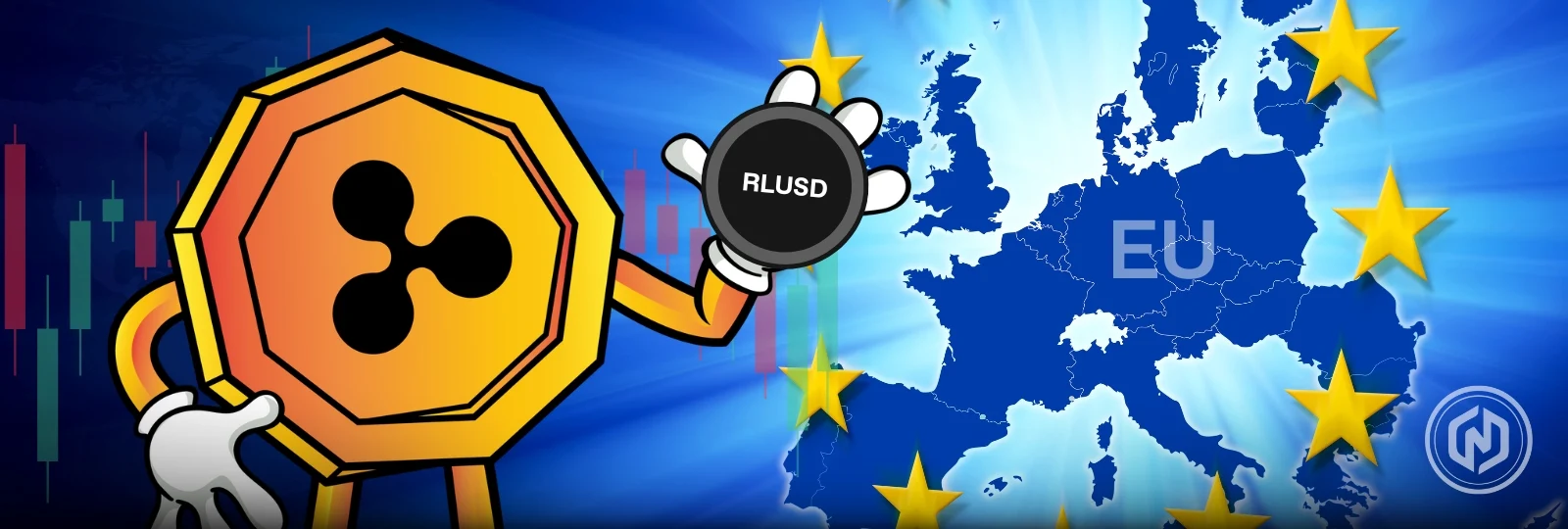Ripple has taken a significant step in expanding its stablecoin operations by introducing the RLUSD token to the European market, using Luxembourg as its strategic entry point.
The move is part of Ripple’s broader initiative to gain compliance under the European Union’s Markets in Crypto Assets (MiCA) regulations and establish a strong presence in the European Economic Area (EEA), as EU demand for digital assets surges.
Luxembourg: A Strategic Launchpad for RLUSD
In April, Ripple established Ripple Payments Europe SA in Luxembourg and has since applied for an Electronic Money Institution (EMI) license. This license will enable the company to operate RLUSD throughout all 30 EEA member countries.
Luxembourg’s global financial ecosystem, robust regulatory environment, and Ripple’s existing partnership with BNY Mellon made it the preferred launch location. The country allows stablecoin issuers to hold up to 60% of reserves in banks, aligning well with MiCA’s reserve diversification and transparency standards.
Luxembourg is not the most common destination for EMI licenses. France currently holds that distinction, but it remains a top-tier financial center with strong international banking connections. Ripple’s strategy benefits from this global connectivity, especially when it comes to managing RLUSD reserves through reputable institutions like BNY Mellon.
Regulatory and Market Momentum
Ripple’s expansion is just about location, also about timing and compliance. MiCA regulations require stablecoins to meet rigorous standards related to reserve management, institutional oversight, and financial disclosure. Ripple has made clear its intent to meet these standards by securing regulatory approvals across major jurisdictions.
Senior counsel Chris Myers, based in Luxembourg, is managing the company’s regulatory approach in collaboration with the country’s financial regulator, CSSF. This regulatory-first strategy is supported by Ripple’s broader hiring push across compliance, anti-money laundering (AML), and digital asset operations throughout Europe.
JUST IN: Ripple to launch $RLUSD stablecoin in EU via Luxembourg. pic.twitter.com/YB0Ay4Pj5d
— ChainDesk (@ChainDesk_) July 15, 2025
The RLUSD stablecoin has already gained momentum globally. In Dubai, it was approved as a crypto token, further validating its international appeal. Ripple’s partnership with Alchemy Pay also adds over 300 local payment options in 170 countries, enhancing RLUSD accessibility through fiat on-ramps.
Market Traction and Global Vision
RLUSD has recorded high adoption rates since its launch. The crypto has a circulating supply of more than 500 million, according to CoinMarketCap, along with the daily trading volumes of approximately 94 million. It is now listed in big exchanges like Kraken, Bitstamp, Bitget, and Archax.
Ripple has a long-term goal to emerge as a global leader on cross-border payments by delivering RLUSD stablecoin. Through regulatory harmonisation and use of proven financial structures, the company seeks to provide a reliable, flexible, and regulatory compliant digital asset platform to transact in any part of the world.
Resorting to Luxembourg is not only one of the landmarks of the European expansion but also the intentions of Ripple to access RLUSD into the mechanism of international digital finance in the future.



